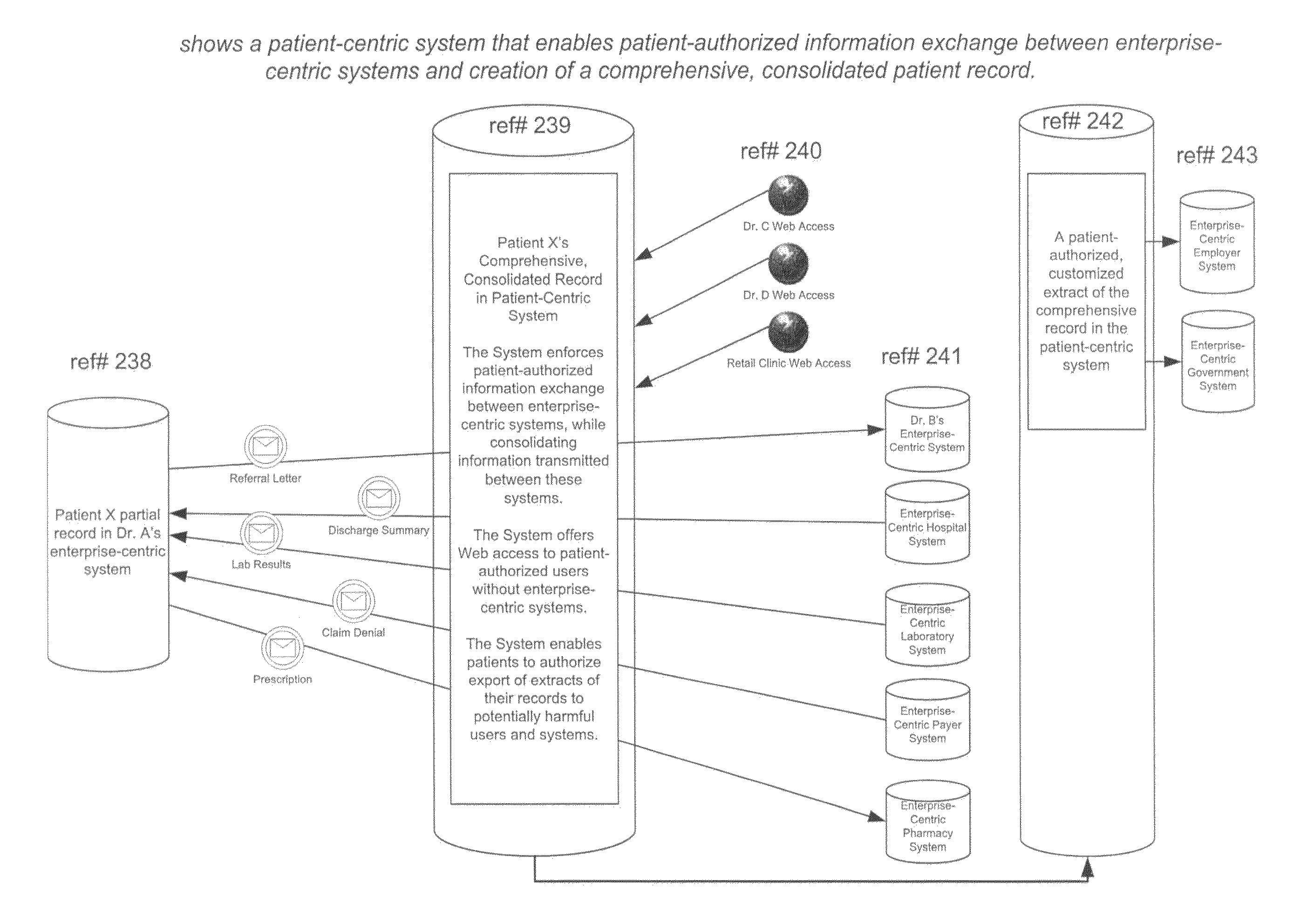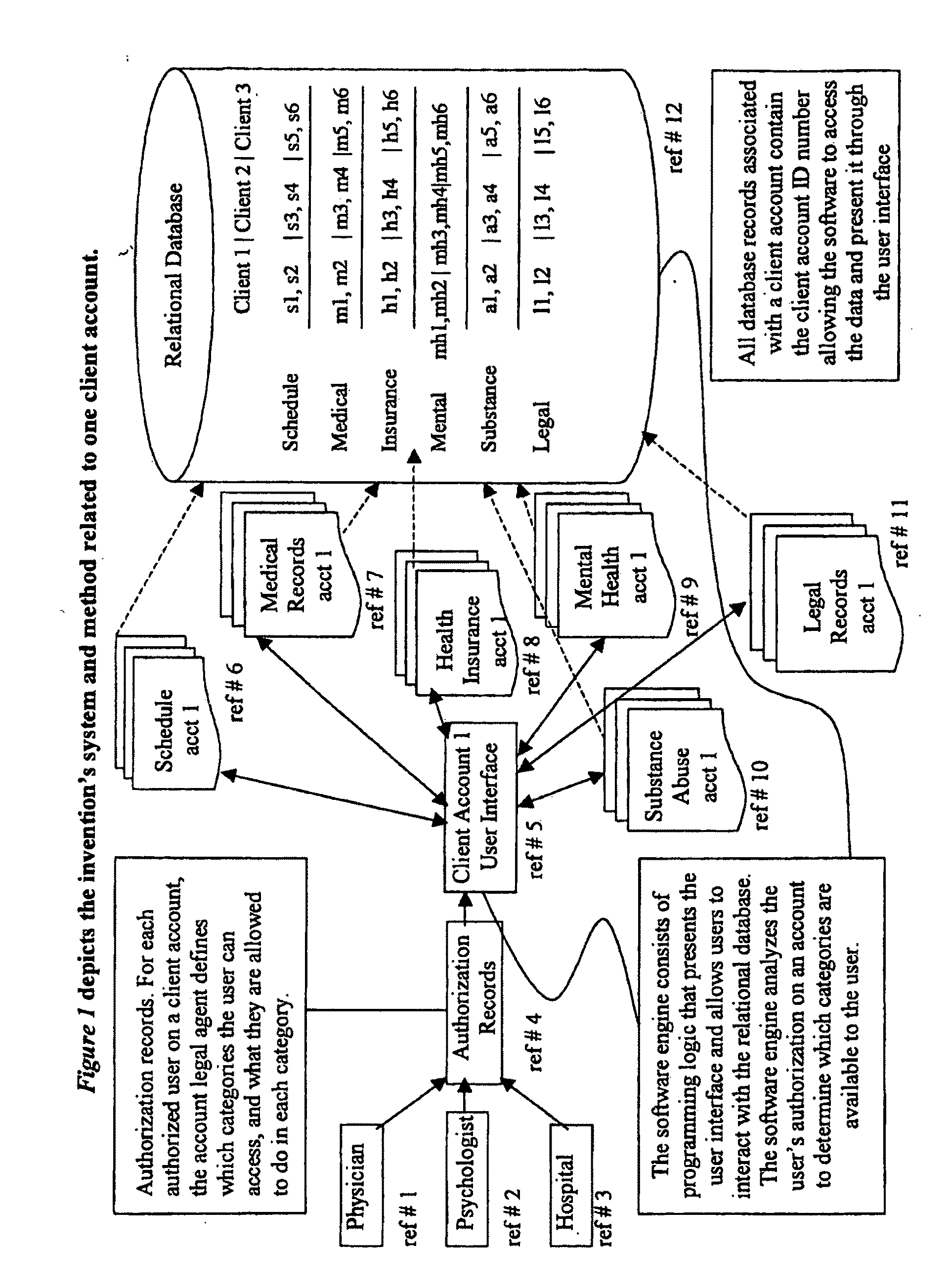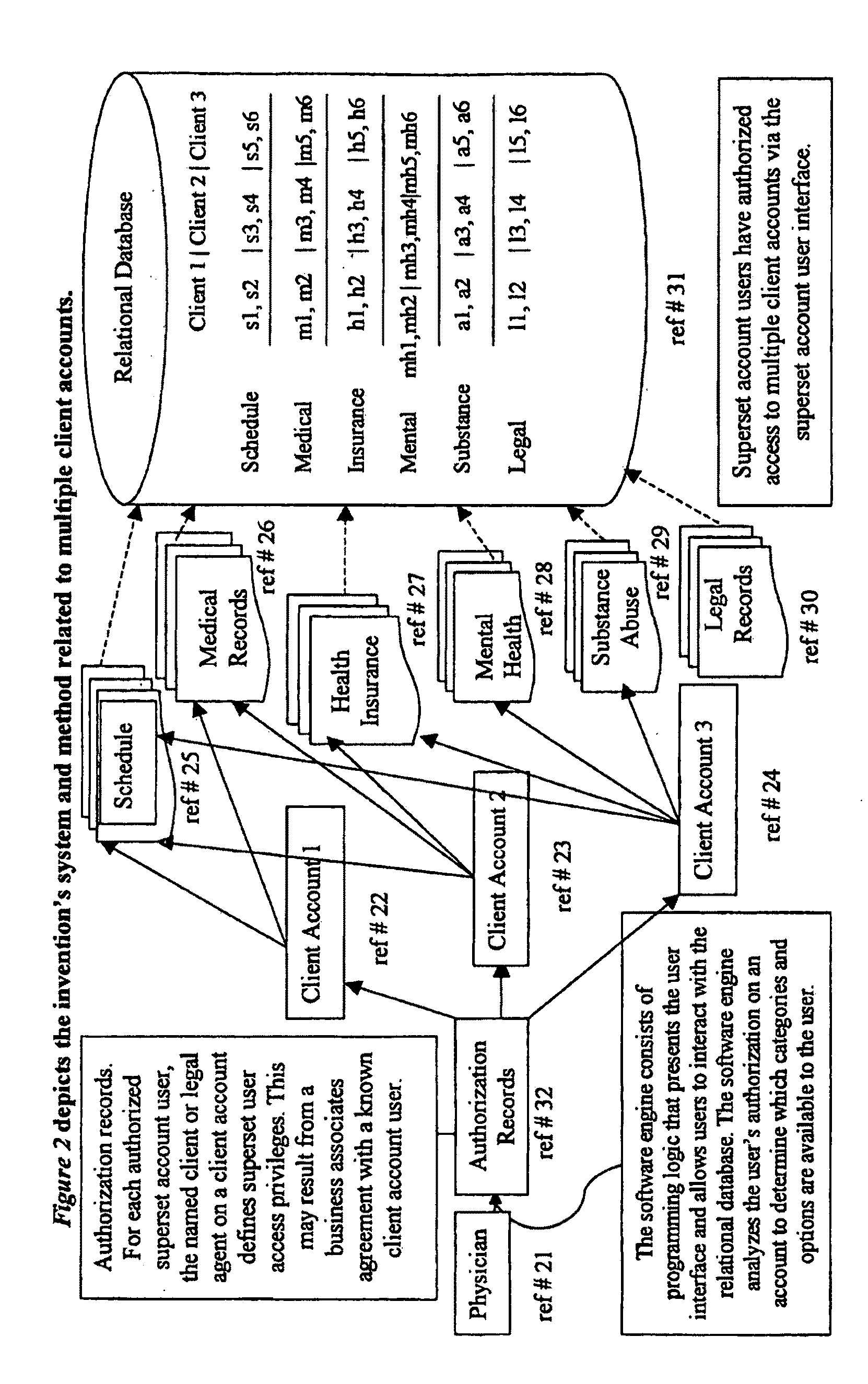Client-centric e-health system and method with applications to long-term health and community care consumers, insurers, and regulators
a client-centric, e-health technology, applied in the direction of data processing applications, instruments, ict adaptation, etc., can solve the problems of reducing individual rights and endangering the public, no existing technology offers a cost-effective means of facilitation, and community-care consumers constantly deal with a vast, uncoordinated, ever-changing array of providers
- Summary
- Abstract
- Description
- Claims
- Application Information
AI Technical Summary
Benefits of technology
Problems solved by technology
Method used
Image
Examples
example 1
Shows the Invention's Client-Centric Audit Trails Feature
[0098]Example 1 illustrates the invention's unique audit trails feature, an expression of the invention's unique system and methods. Enterprise-centric systems have audit trails, but they document only the activities of enterprise users, not the activities of consumers and family caregivers as well as other account users involved in client care but not associated with the enterprise. As such, enterprise-centric systems do little to protect healthcare providers against malpractice claims. The client-centric audit trail documents in chronological sequences the activities of clients, family caregivers, and all the authorized provider and enterprise account users who are involved in consumer care.[0099]The client-centric audit trail is made possible by an eSystem that integrates users (FIG. 5), integrates data categories (FIG. 7), integrates time-dependent data (FIG. 8), and protects data permanence (FIG. 11).[0100]This is how the...
PUM
 Login to View More
Login to View More Abstract
Description
Claims
Application Information
 Login to View More
Login to View More - R&D
- Intellectual Property
- Life Sciences
- Materials
- Tech Scout
- Unparalleled Data Quality
- Higher Quality Content
- 60% Fewer Hallucinations
Browse by: Latest US Patents, China's latest patents, Technical Efficacy Thesaurus, Application Domain, Technology Topic, Popular Technical Reports.
© 2025 PatSnap. All rights reserved.Legal|Privacy policy|Modern Slavery Act Transparency Statement|Sitemap|About US| Contact US: help@patsnap.com



